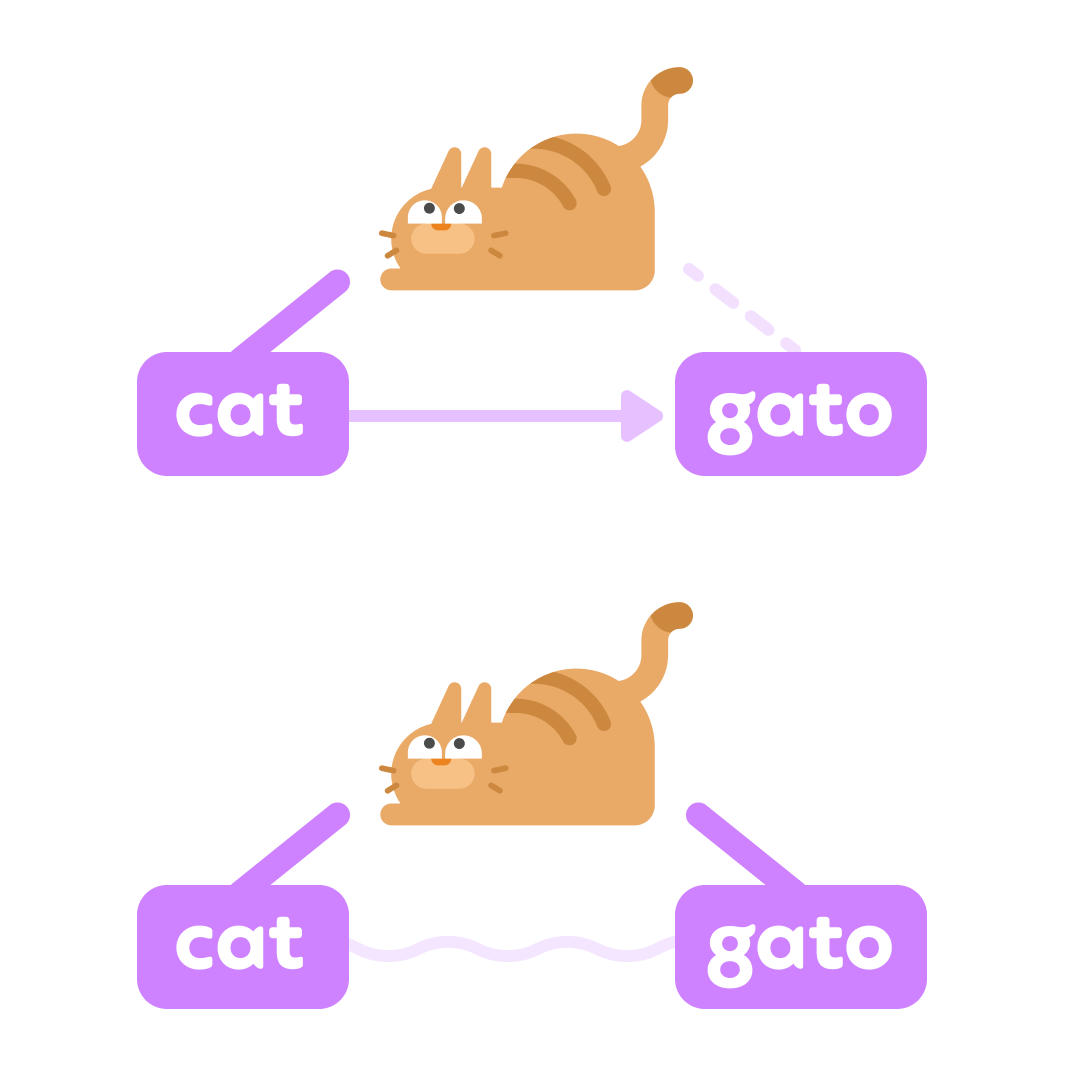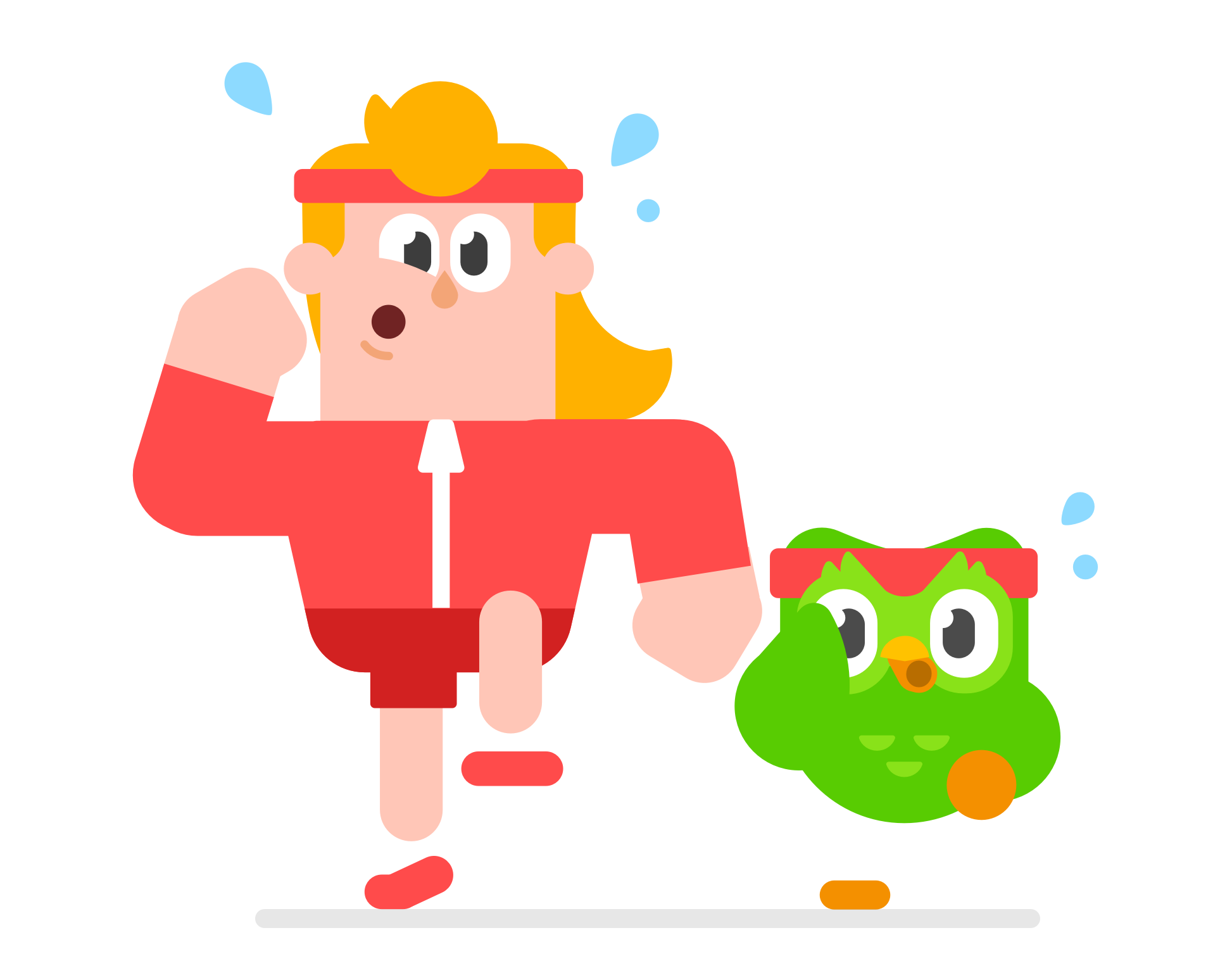Should I Learn Two Languages At Once
There are around seven,000 languages in the globe, and if you lot've studied one you lot might have had the realization that you could study another…and another...make that ALL the languages. Only is information technology a good thought to report multiple languages at a fourth dimension, or is it confusing? Does it make it harder to learn them well?
Reply: Thankfully, your brain can definitely handle learning two (or more!) languages at once! (Two downwardly, 6,998 to go.) But there are also some ways you can make this linguistic job easier on yourself.
In this post, we'll share ideas for studying multiple languages at the aforementioned time, and we'll expect at some research on linguistic communication learning!
How your encephalon juggles multiple languages
The human encephalon is made for learning languages, plural. In some parts of the globe, learning multiple languages from nascence is the norm, or the linguistic communication used in schools is different from the language actually used by the community. And sometimes parents themselves speak different languages with their kids, so in that location is no single "community" language! There are fifty-fifty cultures where everyone is expected to ally someone from a dissimilar language group, then linguistic communication learning is an ordinary part of life.
For languages y'all already know really well, like your first language, you have strong connections between ideas (what you want to say) and the words you use to express them. So when you learn a new word, in a new linguistic communication, your brain starts edifice links from the thought to the new give-and-take — only initially the new discussion is connected to its translation in your own linguistic communication, instead of to the idea itself. You need lots of do and input (linguistic communication you lot tin learn from) to develop strong connections directly from the idea to the new word.

Your brain mostly learns and stores all the languages yous know in the same regions, so in that location's e'er going to be overlapping connections betwixt translations (like true cat and Castilian gato), words that sound similar (like vase and Spanish vaso 'cup, drinking glass'), and especially words that sound akin and have shared meanings (like flower and Spanish flor 'flower'). Your brain can't help simply activate (remember and telephone call to the surface) these related words. It happens with lifelong bilinguals, too!
So how do multilinguals manage to use just i linguistic communication at a time? Lots and lots of practice! Learning to suppress one language, and all its connections, is a cognitive skill that lifelong bilinguals are experts in. The early stages of learning multiple languages might exist the hardest, but there are lots of ways yous can assist yourself get used to this kind of practise.
Tips for learning two languages at once
Here are some ways you tin can brand studying multiple languages manageable and productive:
 | Double your study time. For about adults, the real challenge of learning multiple languages at one time is time. It'south actually important to become plenty input in each linguistic communication you report. If you were studying German language for 30 minutes a day and want to add Castilian to the mix, cutting thirty minutes in half typically means getting less input in each linguistic communication. You might need to double the full time you study to get the same results in each linguistic communication! |
 | Set reasonable expectations. In that location will be pros and cons to studying any pair of languages together. If the new language is similar to ane you already know or take been studying, you lot might become a hang of the basics pretty rapidly -- but it could exist hard to go on 2 rather similar languages, like Spanish and Italian, apart. On the flip side, studying two unrelated languages, like Spanish and Japanese, might mean less confusion between words and rules, but there might be less you can "transfer" from one to the other. |
 | Requite yourself a head starting time in one. Consider studying simply one language to start, until y'all have a solid foundation. (In Duolingo courses, that might mean getting through the first three units.) Once y'all have a skilful command of basic vocabulary, grammar, and building sentences, and then try calculation another linguistic communication. (Yous tin can learn unlimited languages on Duolingo for free!) |
 | Immerse yourself. At the beginning, try studying for longer sessions (like a full 30 minutes of German all at once) instead of breaking it upwardly (like xv minutes in the morning and xv more in the evening). This gives y'all more time to get in "German mode" or "Spanish mode" and really sink into the language. Equally you get more comfortable and more proficient, you might non need as much time to settle into each language! |
 | Create unlike study contexts. Particularly at the commencement, try separating your languages by time and location. For case, you could make a habit of always studying German language in the morning in the kitchen and studying Spanish after dinner on the couch. This can too assist yous get in the "way" of each linguistic communication! Every bit you get more good in the languages, you can try being less rigid nigh your study contexts. |
 | Apply i to practice the other. When y'all're feeling confident in one of your new languages, you lot might exist ready to work on both languages at once. For example, brand flashcards with words in the ii languages (like 1 side High german, 1 side Castilian) and don't use your own language at all! Y'all tin color-code the words to aid divide them, similar always writing German in bluish. On Duolingo, y'all can also attempt the Spanish course for German speakers, to get extra do in both languages at once! |
Language learning never has to stop 💘
Once you fall in love with one linguistic communication, y'all'll exist itching to study more! When studying two or more than languages at the aforementioned time, make sure to spend lots of time with each, to get that earth-shaking language input. There'due south no limit to how many you can larn with enough practice!
To check out the 100+ courses and forty languages offered on Duolingo, head to www.duolingo.com or download the Duolingo app for iOS and Android!
For more tips and ideas near learning a new language, cheque out all our learning posts, where you lot'll detect posts similar this one on improving speaking skills and this one nigh setting smart proficiency goals.
Source: https://blog.duolingo.com/can-you-learn-two-languages-at-the-same-time/
Posted by: bennettwasat1989.blogspot.com


0 Response to "Should I Learn Two Languages At Once"
Post a Comment